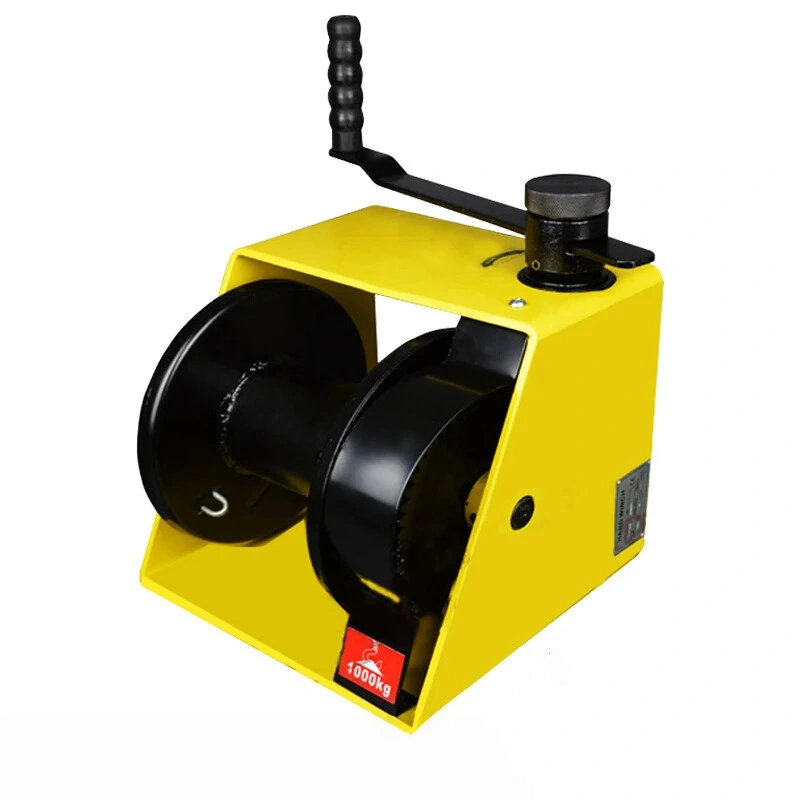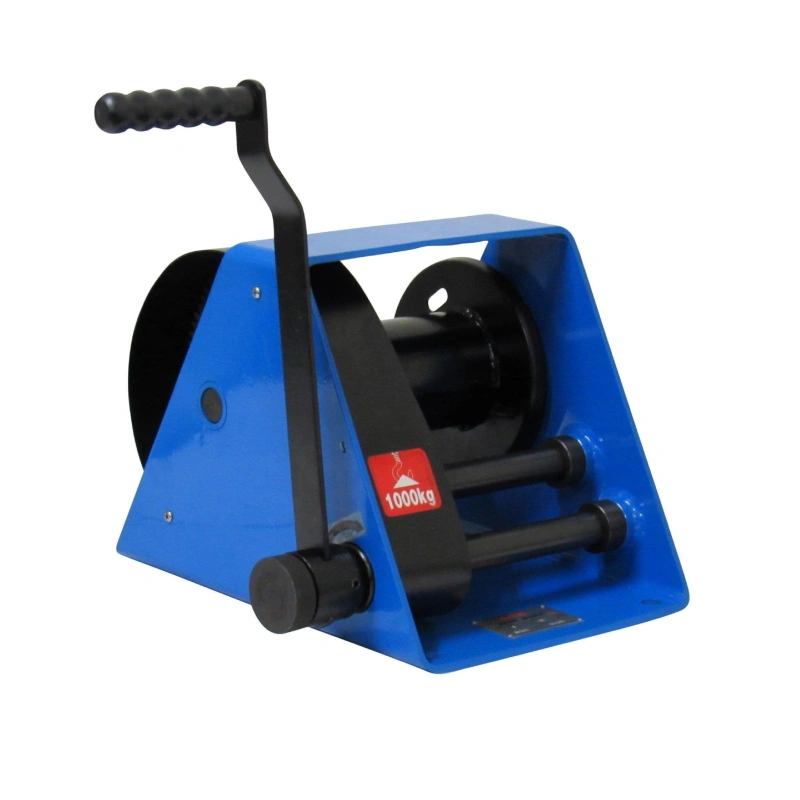If you want to know how to hook a chain with a grab hook, start by choosing the right hook and matching it with the proper chain. Using the correct method makes your work safer and more efficient in industrial settings.
You secure connections to prevent accidental detachment.
You gain stability during lifts, which is crucial for safety.
You achieve optimal load distribution and control, especially with heavy or irregular loads.
Using the right technique protects both you and your equipment.
Key Takeaways
Choose the right grab hook that matches the size and grade of your chain for safe and effective lifting.
Inspect your grab hook and chain for any damage before use to prevent accidents and ensure reliability.
Always secure the connection properly to avoid accidental detachment during lifting operations.
Follow proper hooking techniques to maintain load stability and protect your equipment from failure.
Regularly maintain and clean your rigging gear to extend its lifespan and enhance safety during use.
What Is a Grab Hook?
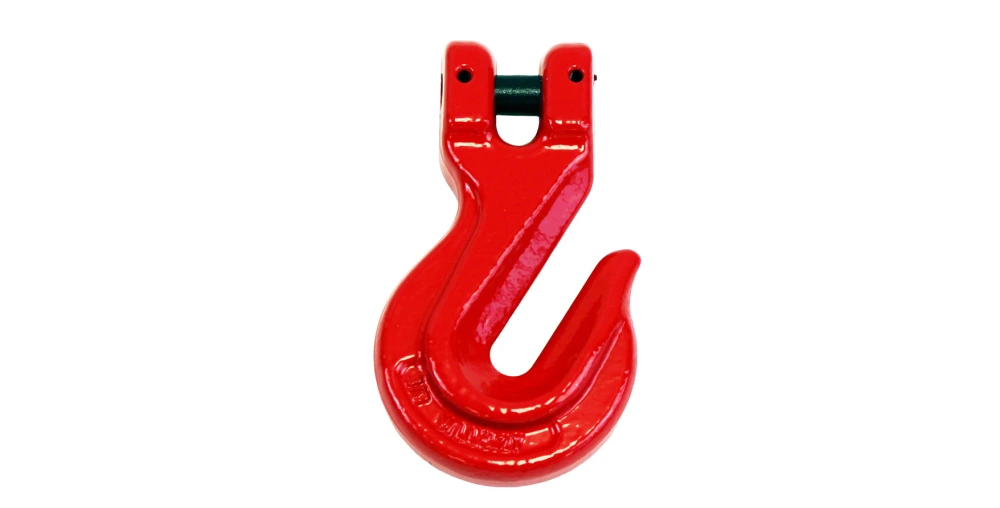
Grab Hook Basics
You use a grab hook when you need to secure, shorten, or control a chain during lifting or rigging tasks. A grab hook has a straight, narrow throat that holds a chain link firmly in place. This design prevents the chain from slipping out, which is essential for safety and load control.
You often see grab hooks in industries like transportation, oil and gas, and logging. They help you pull, tow, or bind heavy loads with confidence.
When you select a grab hook, you must consider the type of chain and the specific job. Compatibility depends on matching the hook size to the chain size, ensuring the connection stays secure even if the chain slackens. High-quality materials also play a key role in durability and reliability.
Type of Grab Hook | Design Features | Advantages | Drawbacks |
|---|---|---|---|
Plain | Simple design without additional features | General-purpose use | Weakens the chain by bending links |
Winged | Features wings to prevent chain link bending | Maintains chain shape, does not weaken it | N/A |
Claw | Claw-like shape that distributes force evenly | Reduces the likelihood of bending | May distort and fail before the chain breaks, shallow slots can uncouple |
Tip: Always match the hook and chain size for safe and stable lifting.
Powerful Machinery Clevis Grab Hook
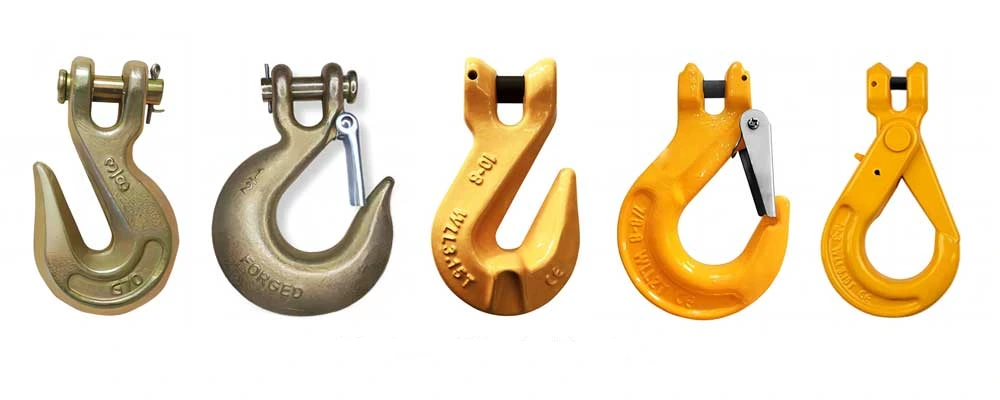
Powerful Machinery stands out as a trusted provider of lifting and rigging solutions. You can rely on their Clevis Grab Hook for demanding applications. This hook is compatible with Grade 43 chains and features a clevis head design that prevents mismatches with chain links.
The integrated saddle supports the chain without reducing the hook’s working load limit.
Feature/Certification | Description |
|---|---|
Material Quality | Made from high-strength Grade 100 alloy steel for exceptional durability and performance. |
Design Features | Engineered clevis head design prevents mismatches with chain links. |
Integrated Saddle | Supports the chain without reducing the hook’s Working Load Limit. |
You benefit from a zinc coating that enhances durability and corrosion resistance. This finish allows you to use the hook both indoors and outdoors, even in harsh weather.
The coating extends the lifespan of the hook and protects it from rust. Powerful Machinery’s Clevis Grab Hook meets strict safety certifications, giving you peace of mind during every lift.
Common Mistakes
Incorrect Hooking
You can compromise safety and efficiency if you hook a chain incorrectly. Many users place the grab hook on the welded side of the chain link, which increases stress and the risk of failure. Always position the grab hook on the smooth, non-welded side of the link.
Other frequent errors include:
Failing to seat the hook fully into the chain link can cause the hook to slip off during use.
Using a cheater bar to force the hook or chain can overload the equipment and lead to sudden failure.
Not accounting for load direction changes, such as shifting from vertical to diagonal pulls, which can overload the hook or chain.
Tip: Always inspect the hook and chain before use. Remove any chain that shows signs of stretching, bending, or deformity.
Chain Compatibility
You must match the chain grade and size to the grab hook. Using the wrong grade reduces the strength of your connection and increases the risk of accidents. For example, the Powerful Machinery Clevis Grab Hook is designed for Grade 43 chains. Using a lower or higher grade can compromise safety.
Chain Grade | Strength Comparison |
|---|---|
Grade 80 | Baseline |
Grade 100 | 25% stronger than Grade 80 |
Grade 120 | Higher than Grade 100 |
Non-certified or incompatible chains and hooks may not meet safety standards. This can lead to catastrophic failures, equipment damage, or even legal liability.
Safety Oversights
You should never skip safety checks. Many accidents happen because users neglect simple inspections. Always:
Check for excessive wear, nicks, or gouges on both the chain and hook.
Ensure the hook is placed properly to minimize the risk of fly-off under load.
Conduct visual and physical inspections before and after every use.
Using certified products from Powerful Machinery helps you avoid these mistakes. Their hooks and chains meet strict international standards, giving you confidence in every lift.
How to Hook a Chain?
Preparation Steps
Before you begin, you must inspect your grab hook and chain to ensure safety and compliance. You protect yourself and your equipment by following these inspection steps:
Inspection Step | Description |
|---|---|
Initial Inspection | Verify compliance with ASME B30.10 for new, altered, modified, or repaired hooks. |
Frequent Inspection | Perform visual checks during operation to identify any conditions that require removal from service. |
Periodic Inspection | Conduct a thorough examination, possibly requiring disassembly, at least every 12 months. |
Removal Criteria | Remove hooks from service if you find excessive wear, cracks, or deformation. |
You must also confirm that your chain and grab hook match in grade and size. Powerful Machinery Clevis Grab Hook is designed for Grade 43 chains. Using the correct combination ensures a secure connection and prevents equipment failure.
Tip: Always clean and lubricate your chain before use. Replace any chain that shows more than 10% elongation or visible cracks.
How to Use a Grab Hook?
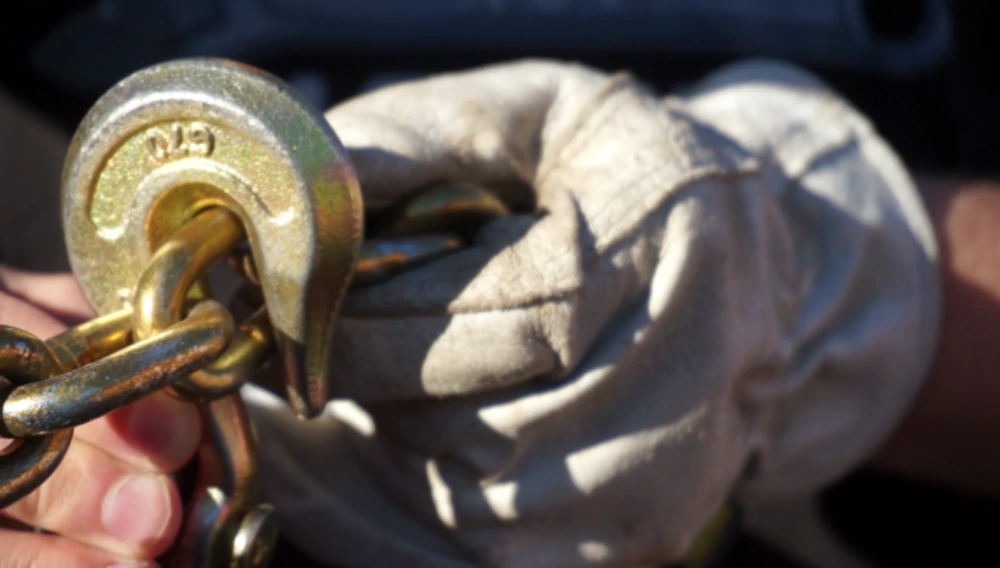
You need to follow a precise method for how to hook a chain with a grab hook. This process keeps your load stable and your equipment safe. Here is the proper way to use a grab hook:
Position the grab hook over a chain link so that the hook sits perpendicular to the link.
Slide the hook down onto the link, making sure the throat of the hook fully engages the link.
Avoid placing the hook on the welded side of the chain link. Always use the smooth, non-welded side for attaching the grab hook.
Confirm that the hook does not point load the chain link or have a tendency to fall off. Cradle hooks support the link evenly, so the load is taken only by the crown of the link.
Use a gripping hitch if you need to attach a snubber to the chain.
Note: Improper hooking can weaken the grip of the chain, leading to accidents and unexpected slips during lifting operations.
Secure Attachment
You must secure the connection to prevent accidental detachment and ensure safe lifting. When attaching the grab hook, check that the chain sits firmly in the throat of the hook. The connection should not allow the chain to slip or shift under load.
Feature | Description |
|---|---|
Robust Construction | Durable double, Y-shaped lanyard design with high tensile strength chain. |
Secure Connections | One 2-1/4” swivel rebar hook on top and two 3/4” snap hooks on opposite ends. |
Chain Specification | Grade 80 chain with 0.31” diameter link and minimum tensile strength of 5000 lbs. |
You must select stable lifting points on the load. Use padding or edge protectors to prevent damage to chains. Choose the correct hitch type based on load capacity and angles.
Always conduct regular inspections and maintenance, including cleaning and lubrication of chains. Replace chains that show signs of wear or damage. Ensure compliance with OSHA and ASME standards, including safety factors and load testing.
Adhering to industry standards such as OSHA 29 CFR 1910.184 and ASME B30.26 helps you maintain safety in lifting operations. These standards require safety factors and regular load testing, which prevent equipment failure and accidents.
Tip: Use tag lines to guide and control the load during lifting. Slow and steady lifting motions reduce the risk of swinging or sudden shifts.
If you follow these steps for how to hook a chain, you achieve a secure and reliable connection. You protect your team and your equipment by using the right technique and certified products from Powerful Machinery.
Safety and Best Practices
Load Limits
You must always respect the working load limit (WLL) of your grab hook and chain. The WLL tells you the maximum weight you can safely lift or secure. Exceeding this limit puts you and your team at risk.
Manufacturers set the WLL far below the minimum breaking strength (MBS) to provide a safety margin. For example, a grab hook with a WLL of 2 tonnes and a 4:1 design factor has an MBS of 8 tonnes. Always check the tag or markings on your equipment before use.
Chain Grade | Applications | WLL Characteristics |
|---|---|---|
Grade 30 | Light construction, marine | Not suitable for overhead lifting |
Grade 43 | Towing, logging | Stronger than Grade 30, not for overhead lifting |
Grade 70 | Transport | Used for securing loads, not for overhead lifting |
Grade 80 | Heavy-duty towing, overhead lifting | Made from heat-treated alloy steel |
Grade 100 | Premium lifting | 25% higher WLL than Grade 80, safe for overhead use |
Grade 120 | High-performance lifting | 50% stronger than Grade 80, for demanding jobs |
Note: Never load your rigging equipment beyond the manufacturer’s recommended WLL.
Inspection and Maintenance
You protect your equipment and your crew by inspecting your grab hook and chain regularly. Look for cracks, nicks, gouges, or any sign of bending. Remove any hook with a throat opening that has increased by more than 5%. Replace chains or hooks that show distortion or excessive wear.
Inspection Type | Frequency |
|---|---|
Daily Visual Inspections | Before the first operation on any work shift |
Frequent Inspections | At the start of every shift |
Periodic Inspections | At least four times a year |
Clean and lubricate your chains and hooks to prevent rust and reduce wear.
Store your rigging gear in a dry, protected area.
Replace any component that fails inspection.
Tip: Regular maintenance extends the lifespan of your equipment and keeps every lift safe.
Powerful Machinery Product Tips
You get extra peace of mind when you use Powerful Machinery products. Their grab hooks meet EN 1677-1, ASTM, and ISO 9001 standards, which means you can trust their strength and quality. Always ensure the spring-loaded wire gate closes securely after each use.
Inspect your hooks more often if you work in humid or salty environments. Never exceed the rated weight limit. Avoid dropping or striking your hooks to keep them in top condition.
Powerful Machinery’s certifications and rigorous testing give you confidence in every lift.
Conclusion
You can hook a chain with a grab hook safely by following these key steps:
Match the hook size to your chain.
Inspect both the hook and chain for damage before use.
Secure the connection and ensure the latch closes fully.
Using certified, high-quality products like those from Powerful Machinery reduces safety incidents and supports reliable lifting. Always review product documentation and keep your equipment maintained. For more guidance and product options, visit Powerful Machinery.
FAQ
How do you choose the right grab hook for your chain?
You select a grab hook by matching the hook size and grade to your chain. Always check the manufacturer’s specifications. Powerful Machinery provides clear compatibility charts for each product.
Tip: Use only certified hooks for lifting or securing heavy loads.
Can you use a grab hook for overhead lifting?
You can use a grab hook for overhead lifting if it matches the chain grade and meets safety standards. Powerful Machinery’s Grade 80 and Grade 100 hooks are suitable for these applications.
Chain Grade | Overhead Lifting |
|---|---|
Grade 43 | ❌ Not recommended |
Grade 80/100 | ✅ Approved |
What maintenance does your grab hook require?
You inspect your grab hook before each use. Clean and lubricate it regularly. Store it in a dry place. Replace the hook if you see cracks, wear, or deformation.
Regular maintenance extends the life of your equipment.
Why should you avoid using mismatched chains and hooks?
You risk equipment failure and injury when you use mismatched chains and hooks. Always match the grade and size. Powerful Machinery hooks come with clear markings for easy identification.
Where can you find certified grab hooks and chains?
You visit Powerful Machinery’s website to explore certified grab hooks and chains. The site offers detailed product specifications and safety certifications.
Certified products ensure reliable performance and safety.

